Technique: How I Replace White Sugar
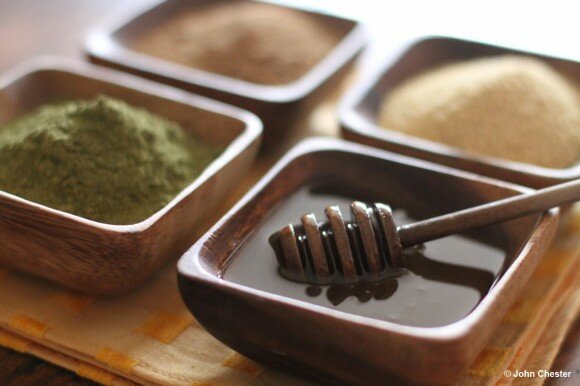

Using sugar substitution to save a favorite family recipe can serve as an action-packed Friday night activity, I swear. A world of options crawl out from beneath the white sugar canister, where they sat patiently waiting for us to acknowledge our self-inflicted deprivation of both nutrition and flavor. Familiar things like honey and maple syrup get dusted off and re-appreciated, but upon deeper digging, options like palm sugar, honey granules and date paste rear their sweet little heads. I’ve played with them all, and in the process, narrowed it down to my own personal go-to sweeteners, which I’ve shared with you below.
Converting a favorite white sugar recipe doesn’t take a whole lot of smarts, but rather, a bit of guts and the understanding that when swapping a granular sweetener for a liquid sweetener (ex. white sugar for honey) the additional liquid in the recipe (ex. milk) may need to be reduced. And though I could pretend to give a list of exact rules for how much liquid to reduce, in truth, every single recipe is different, which is where the guts are needed. However as a generic starting point, I suggest reducing the overall liquid content of a recipe by 1/4 cup for every 1 cup of liquid sweetener that is substituting for granular.
To make life easier, I tend to stick with direct substitutes of granular sweeteners for granular sweeteners (ex. maple crystals for white sugar) and liquid sweeteners for liquid sweeteners (ex. honey for corn syrup.) A bit safer this way, but every bit as delicious.
Either way, go for it! Mess up! Try again! Once you get a good final product, you’ll be sharing your prized, healthier recipe with friends for years to come. Heck, send it over to me. I’d love to hear what you’ve been working on…
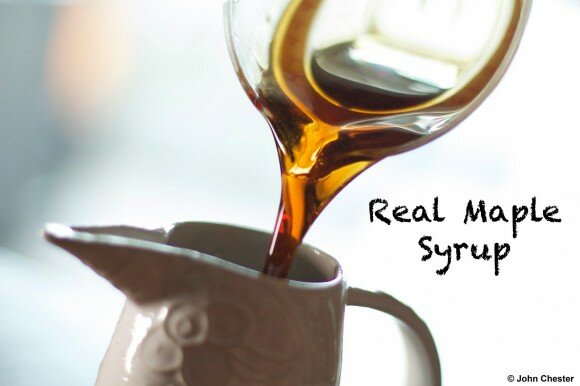
Real Maple Syrup -Real Maple Syrup comes from a maple tree. Fake Maple Syrup is colored sugar water. Look at the ingredients for the potential purchase, if they include only maple syrup, you’ve found the mother-ship. The flavor will be rich, deep, autumn-esque and caramel-y. Real Maple Syrup substitutes 1:1 for any liquid sweetener. Examples of Maple Syrup recipes include: Sprouted Apple Butter Dots & Maple Walnut Cake with Maple Cream Cheese Frosting.
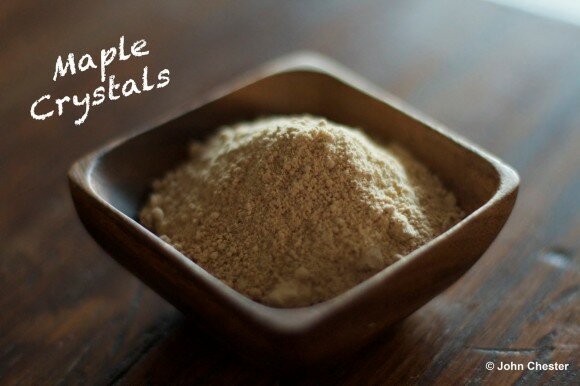
Maple Crystals - Maple Crystals are simply dehydrated Real Maple Syrup, and what a treat they are! They can substitute 1:1 for white sugar, however they do add an additional soft fluffiness to the texture. It’s quite nice, and I turn to this sweetener when I desire that effect. I also know several people who sprinkle this sweetener on their morning oatmeal. Doesn’t that sound amazing? The taste is unmistakably maple. An example of a Maple Crystal recipe includes: Carrot Pudding.
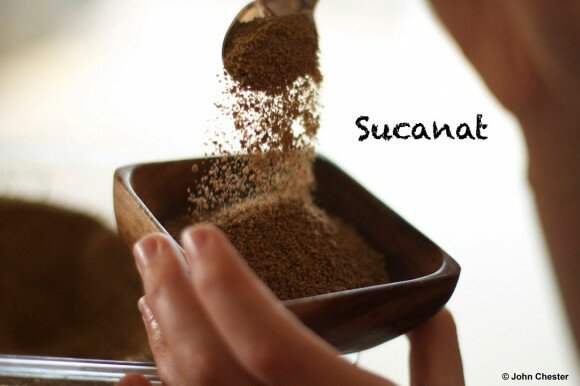
Sucanat – Sucanat is pure dried sugar cane juice. Unlike common white sugar, Sucanat is unrefined and therefore contains the molasses mineral content typically lost in the refining process, resulting in a rustic and deep flavor. Aesthetically, Sucanat’s closest relative is brown sugar, for which a 1:1 substitution is commonplace; however, Sucanat is more granular, less moist and more nutritious. Brown sugar is typically common white sugar with just a bit of molasses added back.
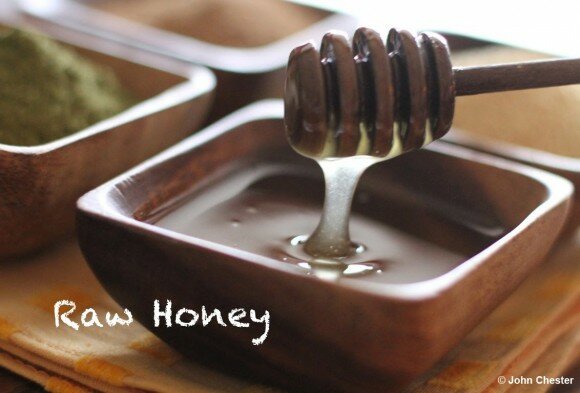
Raw Honey – Regular store-bought honey has been pasteurized, which means it has been heated and strained to obtain a clear product that is easier to pour. Unfortunately, during this pasteurization process, many of nature’s beneficial bacteria and enzymes that help our bodies break down the sweetener are destroyed. Although the heat of preparation negates many of these positive properties, I still recommend purchasing Raw Honey for cooking and baking. I find the overall quality of the honey to be more consistent, and I prefer supporting farmers who choose less refinement in their practices. If Raw Honey can’t be sourced, regular honey may be substituted in equal measurements. Raw Honey substitutes 1:1 for any liquid sweetener. Examples of Raw Honey recipes include: Carrot Popsicles & Green Bean Salad with Heirloom Cherry Tomatoes.
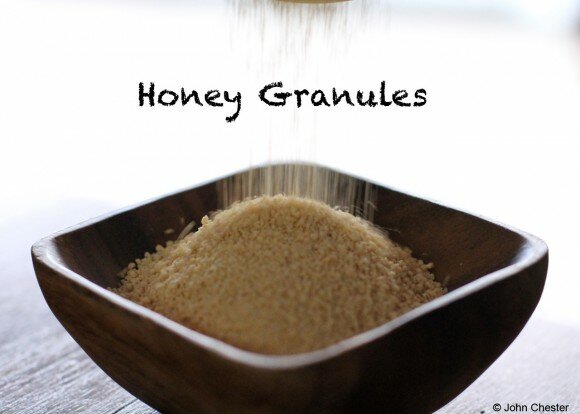
Honey Granules – Honey Granules are a unique sweetener that are made from a combination of unrefined sugar cane juice (Sucanat) and a bit of honey in order to lighten the color and texture of the final product. The best place to source Honey Granules is from an amazing company out of Woodstock, GA called Bread Beckers, who ships all over the US. I buy the convenient 5lb pail. I find Honey Granules to be the most accurate 1:1 natural sweetener swap for white sugar. The color of the final product will be more rustic, resulting in a cream/egg-shell rather than a pure white. An Example of a recipe using Honey Granules is: Heirloom Watermelon Italian Ice.
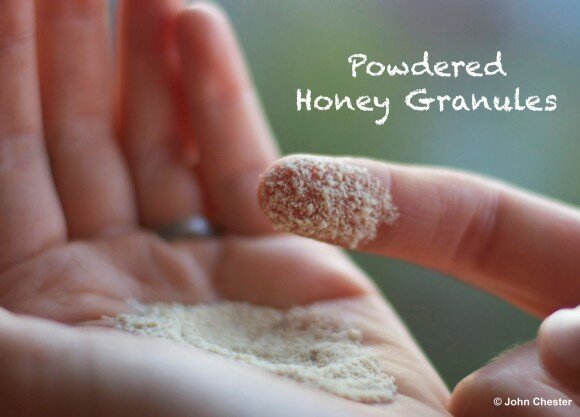
Powdered Honey Granules – Powdered Honey Granules are simply regular Honey Granules that have been broken down in a blender or coffee grinder to reach a texture similar to refined white powdered sugar. Again, the color will be deeper, but the texture enables a natural cook to still make a great cookie frosting! To make Powdered Honey Granules: Keep in mind that 1 cup of Honey Granules will yield 1 cup of Powdered Honey Granules. Measure the amount needed into the bowl of a blender (or coffee grinder for small quantities.) Cover and blend on high speed. Stop every 10-15 seconds to shake the container, re-distributing the granules. Continue blending until all granules are powdered. Avoid over-blending, which can begin to melt the granules. Allow the dust to settle before removing the lid. Store in an air-tight glass container in a cool pantry for several months. Warm temperatures may cause the powder to harden. If they do harden, simply re-process in the blender.
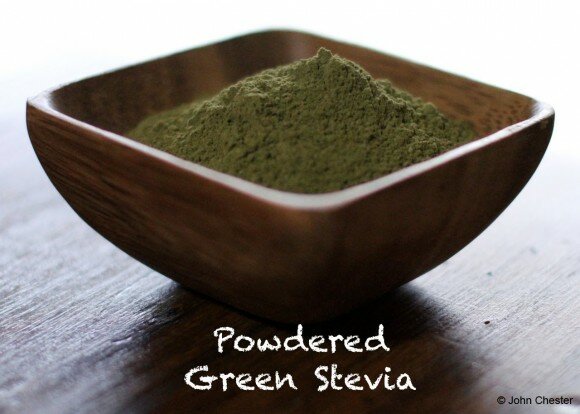
Powdered Green Stevia – Stevia is a plant, native to South America. The natural green Stevia leaves were traditionally steeped in tea to impart a pleasantly sweet taste. The leaves can also be dried and crushed into a fine, green powder. Many people who are intolerant of all sweeteners, even natural ones, enjoy Powdered Green Stevia with no side effects. An additional refinement process can turn the green powder to white, but I feel it also imparts a bitter aftertaste, reminiscent of artificial sweeteners. I also find the white version to be much stronger. Due to the natural green color, Stevia is best used in a recipe such as Chester Cookies, where the green color blends well into the deeper hue of other ingredients, in this case almond butter and rolled oats. Powdered Green Stevia is significantly stronger than white sugar, approximately 1 tsp can replace 1/4 cup of sugar. Stevia also works well in tandem with another sweetener. For example, 1 tsp of Powdered Green Stevia + 1/4 cup of Raw Honey results in a taste that is the strength and flavor of 1/2 cup of Raw Honey, which is the technique I use in Really Healthy Granola.
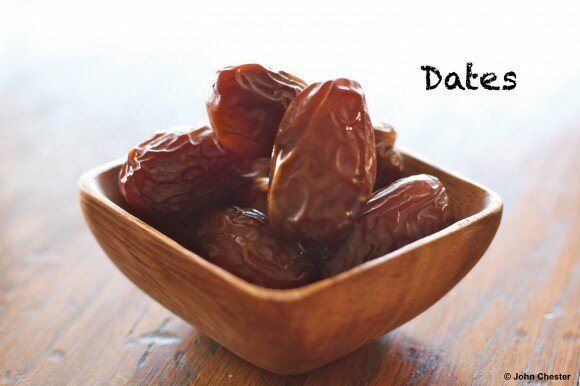
Dates – Dried fruit can serve as a sweetener for anything from cakes to salad dressings. I am highlighting the Date because the texture and flavor are simply amazing! Dates come in many shapes and sizes. I personally avoid the very hard bagged variety. If you can get your hands on the moist and royal Medjool Date (shown in the picture above), please add one to a blender with some fresh-squeezed lemon juice, a dash of apple cider vinegar, extra virgin olive oil and a pinch of sea salt & pepper for a delicious Lemon Vinaigrette. Just remember to remove the pit!
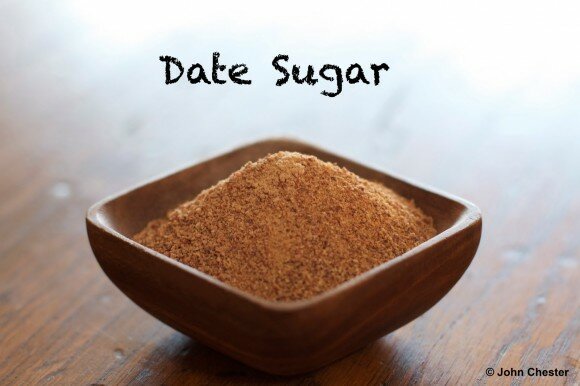
Date Sugar - Date Sugar is simply dehydrated and ground Dates. Used as a 1:1 substitute for brown sugar, usually, but also white sugar, I find Date Sugar to impart a softness to the texture of baked goods, similar to Maple Crystals. I also find Date Sugar to be less sweet, causing me to turn to this sweetener when a subtle product is desired. Date sugar does not melt well, which results in pretty flecks of brown in the final product. But because it doesn’t melt, I skip this sweetener when candying nuts or making frosting.
29 comments
-
Elizabeth (Foodie, Formerly Fat)
I too gave up refined white sugar about 12 years ago. Sucanat and maple syrup are my two go-to sweeteners now but I’m definitely intrigued by the honey granules and date sugar.
I’m trying to do my own small “education project” on refined white sugar with my family and friends. It’s amazing to me how deeply, and emotionally, attached people can be to their traditional ways of cooking. Perhaps, I shouldn’t be so surprised since I’ve become very attached to my new ways of cooking.
Wonderful post and beautiful pictures. I’m so glad Deliciously Organic pointed me your way.
March 9, 2011 -
-
Molly Chester
Elizabeth – What a great thing you are doing for your friends and family! It will open them up to the concept that what they eat affects how they feel, and such an important connection to make! Best to you – Molly
March 10, 2011
-
-
Leigha Edin
Thank you so much for this post!! I just discovered date sugar about two weeks ago and I am hooked! Can’t wait to try the honey granules. I am in the process of getting my family off of sugar and it is going well. I am so glad to have this page to look back on and make this process great!
March 9, 2011 -
Lisa Ford
I too am glad that I came across your website, I printed off three receipes yesterday that looked so good. The information on the replacements for white sugar are very helpful. I am already a fan of Maple syrup and honey but the honey granules have really peaked my interest. My question is can you use this in everything that you would normally use white sugar? Does it change the flavor in any way? I look forward to visiting your site often. Found it interesting that your last name is Chester…that is my maiden name!
March 10, 2011 -
-
Molly Chester
Hi Lisa Ford (Chester) :)
Thanks so much for stopping by! Yes, honey granules may be used anyplace that you use regular white sugar. It will change the end result, sure. Sometimes for the better! The color will be affected in things like meringues, and the texture may or may not change. But, it is a very close substitute, and more often than not, I am very pleased with the results.
Hope to chat with you again! MollyMarch 10, 2011
-
-
Laken
Wow, I’m so glad to have found your blog. It’s really wonderful.
And this post is exactly what I’ve been looking for! Thank you!March 11, 2011 -
-
Molly Chester
Laken – I’m so glad you found it, too! Thanks dear!
March 12, 2011
-
-
Briana
Hey Molly,
What is your experience with coconut sugar? I found some at the co-op that I shop at and I picked some up. I have been using it in cookies and it seems to be alright. Obviously not as sweet as white sugar.
March 14, 2011 -
-
Molly Chester
Hmmm… I haven’t used it yet! My instincts say it would react like a cross between maple sugar and date sugar. Not sure though. Let me know how it works for you!
March 15, 2011
-
-
chronic
I’ve been searching in google for some new ideas and accidentally found this http://www.organicspark.com blog. I can see that you are a specialist at your work! I am launching a website soon, and your info will be very useful for me.. Thanks for the excellent work and wishing you the success in your business.
April 6, 2011 -
Amy Cook
My family is trying to give up sugar and have been satisfied with succant and maple syrup for most things. I am a southerner and while I have given up all soda’s I just can’t bring myself to give up my sweet tea :). I tried the succant and wasn’t pleased with the results. Suggestions please?
July 20, 2011 -
-
Molly Chester
I would try sucanat with honey or raw honey in the blender using the same technique that I use for the Raw Honey Lemonade recipe that I use on the blog. Let me know how it goes!
July 24, 2011
-
-
Ged
I gave up using refined sugar over 20 years ago and substituted it for sucanat (I would dry blend it if I needed “white sugar” consistency or dry blend it with a little corn starch if I wanted “powdered sugar”). That being said, this past spring I gave up ALL forms of added “sugar” except stevia (and on very rare occasions, erythritol, which is a sugar alcohol & isn’t really that good for you, but it doesn’t make me go back to craving sweets). If I need to make something sweet & stevia won’t do it, I chop up medjool dates & soak them in a bit of water & use the water and the dates to sweeten my recipe. This works amazingly well for many things.
The reason I write all this, is to 1st congratulate you on taking the 1st step in getting off refined sugar! Yea!!
2nd, to tell you that perhaps like me, you will, after a while, find even sucanat to be addictive (just not as bad for your body as refined sugar, which, btw, is seen by the body as ethyl alcohol because they are nearly identical in molecular structure!) and you may decide to “come off of it” -which is difficult for many. Be assured, I can tell you 1st hand that not only can it be done, but I have lost all physical cravings for it as well. (Psychologically, I still think about my “comfort foods” but they don’t feel like cravings anymore!) It takes about 6-8 wks to lose the addicted feelings, but it’s a glorious freedom!
Lastly, I wanted to let you know a few things that taste really great with stevia (some things taste AWFUL with stevia!). The first, and my favorite, is ZEVIA GINGER ROOT BEER SODA. It tastes like old-fashioned root beer soda, and I’ve even lightly frozen cans of it, used a can opener on the top and scooped it out like a slushy when it’s hot out! My daughter likes the Zevia cream soda, but I think it has a funny aftertaste. Not all the flavors are good tasting. The cola is probably good, but I don’t do caffeine, so I don’t know. The fruit flavors again have an aftertaste, in my opinion. The other things I LOVE stevia on (or in) include lemonade (-absolutely NO bitter aftertaste!) and on halved grapefruits (amazing dieting treat if you like grapefruit!) I’ve also made a no-bake cheesecake that was a huge hit at a party. No one even noticed it didn’t have sugar! Finally, any herbal tea or Crio Bru (roasted cocoa beans ground like coffee beans) is good with stevia as long as you only add a little. Too much and wow it gets bitter. So, now maybe there is a way you could use stevia or dates (or both) to sweeten your sweet tea too!
-Good luck with your healthy choices!June 24, 2012
-
Lauren
I just stumbled upon your blog and I LOVE IT. The layout is awesome and so user friendly.
One question…are maple crystals the same as maple sugar? I recently received a jar of maple sugar as a gift and was not sure what it was. Thanks!
Can’t wait to see what you post next!
September 30, 2011 -
-
Molly Chester
Same thing Lauren! You are going to love them… thanks for stopping by!
October 1, 2011
-
-
jill
HI Molly,
I’m wondering where you get your date sugar — or do you make it yourself? Do you know if it is “legal” for GAPS diet? It seems like it would be since medjool dates are legal.October 2, 2011 -
Stacy
Do you have a general rule of how many whole medjool dates you need to replace honey or white sugar?
November 1, 2011 -
-
Molly Chester
Not really. They aren’t really an equal substitute. Overall, they are much less sweet. I would say maybe 4 for a 1/4 cup of sugar. Just a guess though…
November 3, 2011
-
-
ann oestreich
question: when substituting coconut crystals for white sugar how much do you use? Thanks.
March 23, 2012 -
-
Molly Chester
I would follow the instructions for Sucanat above. It will be about the same. It will end up maybe slightly less sweet, like a date sugar.
March 25, 2012
-
-
Vanessa
I’m trying out a home made starbucks passion tea lemonade. I have found recipes that use tea, lemonade, and sugar. I’m aiming for using just lemon juice with more water, and some type of other sweetener. What would you recommend?
May 6, 2012 -
-
Molly Chester
Sucanat with Honey, Stevia or Honey would all be delish. If you use honey, stick the mixture in the blender to get it all combined properly.
July 14, 2012
-
-
Marilou
this is an awesome article! i was looking if date sugar exists and I found this. I gave up using white sugar a few years ago but only lately i found dates a very good sugar alternative. whenever i bake, i just chopped up dates and it always turns up as sweet as the sugar and it added a luscious taste to the baked goodies.
May 31, 2012 -
Karen H
Have you baked with date syrup at all? I am wondering what ratio would work as a substitute for refined sugar in a cake.
June 24, 2012 -
-
Molly Chester
I haven’t used date syrup… never heard of it! I have used date paste though. Is it the same thing? I’m guessing it can be substituted for liquid sweeteners. It would be hard to substitute for dry granular sweeteners. Try it in place of a honey.. let me know how it goes!
July 14, 2012
-
-
thyme (sarah)
This is fantastic information. I am jumping on the bandwagon of looking for alternative sweeteners. I will be all over your blog because I can see it is packed with the education that I need. I’ve written down green stevia, date sugar, honey granules, and sucanat….I’m off to Whole Foods to see if I can find any of these to replace the brown sugar in my granola bars that I am currently featuring on my blog. Thank you!
July 31, 2012

Erin Bankston
This is great. I’ve been looking thru here and I came across this one. I am a sugar-aholic, seriously needing some help. :) I am going to try some of these because if I’m still gonna eat sugar, might as well be a healthier version. Thanks!
Molly Chester
I am glad you found this Erin! Just fyi, for my body – I find that upping my consumption of healthy unrefined fats dramatically reduces my sugar cravings!
King
Another healthier alternative would be Coconut Sugar. It is safe to use even to diabetics.